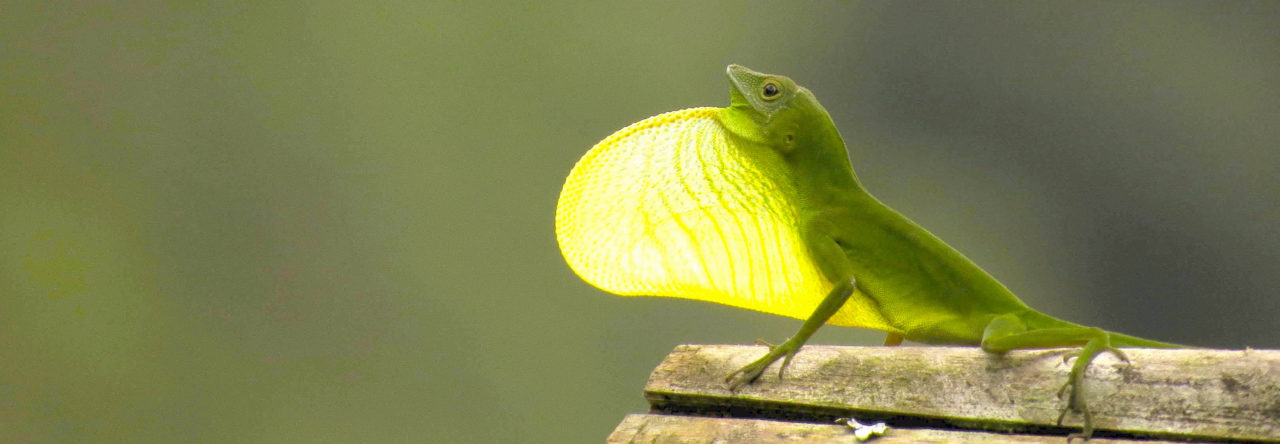Ian Wang kicked off the anole portion of this year’s Evolution meetings by presenting his Young Investigators Prize lecture on the role of geographic distance and environmental differences as causes of genetic differentiation among populations. Teasing out the effects of these two variables is difficult because they tend to be correlated–nearby populations tend to share similar environments, whereas more distant populations are more likely to occur in different environments.
Ian reported on a new program he has developed, entitled MMRR (pronounced “merrrrr”–I can’t remember what it stands for) to statistically disentangle the two effects. He presented case studies on Yosemite toads and strawberry poison frogs where application of this new method revealed a previously unappreciated effect of environment in determining genetic differentiation. He then reported on a comparative analysis of 17 Caribbean Anolis species in which, as a generality, geographic distance (“isolation-by-distance”) accounted for twice as much of the variation in genetic differentiation as did environmental differences (“isolation-by-environment”). Interestingly, and inextricably, the major exception was the three species on Jamaica, for which IBE accounted for very little variation. These results were recently published in Ecology Letters and the subject of a previous post.
Ian then presented new results examining geographic variation in morphology in two co-occurring Puerto Rican species, Anolis cristatellus and A. stratulus. In an extension of the structural equation modelling approach used in the anole work, Ian investigated the extent to which morphological variation among populations could be accounted for by environmental variation, controlling for geographic and genetic differences among populations. The results indicated that body size variation in body species was correlated with environment, with larger lizards in hotter/drier areas (see photo above). In addition, in A. cristatellus, longer-limbed lizards also occur in hotter/drier areas. This is an exciting approach that opens new doors to the study of geographic variation in morphology, and I anticipate that it will be widely emulated.
- Evolution in Real Time on Lizard Island - March 23, 2025
- Spider Snags Adult Anolis osa - March 22, 2025
- An Homage to the Green Anoles of New Orleans - March 21, 2025



2 Pingbacks